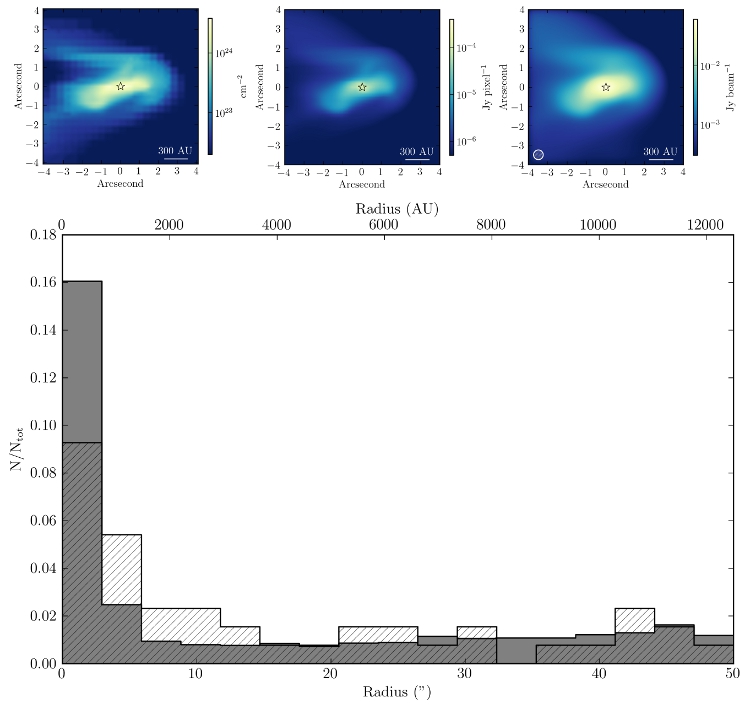| EPoS Contribution |
|
Bridging the gap between large-scale simulations and observations of star forming cores
Soren Frimann NBI/STARPLAN, Copenhagen, DK | |
|
Numerical simulations and observations of star forming cores are topics which both see a lot of progress these years. MHD simulations of molecular clouds have reached a level, where it is possible to evolve the cloud on parsec scale, while simultaneously resolving the neighbourhood around the individual protostars on AU scale. At the same time inteferometers such as ALMA, with its increased sensitivity and resolving capabilities, are making it possible to zoom in on the protostellar cores in their earliest stages and map their gas and dust content.
With advances in both simulations and observations, it is important to examine how well the two subjects compare to each other and, in cases where they predict differently, to identify the issues. In the talk I will present synthetic observations of a large number of protostellar cores, created from high resolution numerical simulations coupled with radiative transfer. The synthetic observations are compared to real counterparts obtained from a range of different submm telescopes. In one case 24 um Spitzer maps, and 850 um SCUBA maps from Perseus have been used to calculate the distribution of distances between protostars and their parental cores. This produces a centrally peaked distribution as shown by the hatched histogram in the figure. The synthetic observations produce a somewhat narrower distribution (grey histogram in the figure), but in both cases the conclusion remains the same, namely that the newly formed protostars do not migrate far away from their parental core. I will also present synthetic observations on the development of the small- to large-scale flux ratio (e.g. S3"/S14" beams) for deeply embedded systems. Using data from SMA and JCMT, this ratio has been observed to increase when going from Class 0 to Class I objects. This indicates a decrease in the envelope (large-scale) flux relative to the disk (small-scale) flux. | |
 | |
| Caption:
Top: From raw simulations to continuum images. Left: A small cutout of a single protostellar system from the global simulation, which was created using the adaptive mesh refinement code RAMSES. Middle: A continuum image of the same system after running it through the radiative transfer code RADMC-3D. Right: The same image after convolving it with a 0.5" telescope beam.
Bottom: Protostar-to-core distance distribution. The grey histogram shows the distribution from the synthetic observations. The hatched histogram shows the observed distribution. | |
| Collaborators: J. Jorgensen, NBI/STARPLAN, Denmark C. Brinch, NBI/STARPLAN, Denmark T. Haugboelle, NBI/STARPLAN, Denmark |
Suggested Session:
Cores to Disks |

